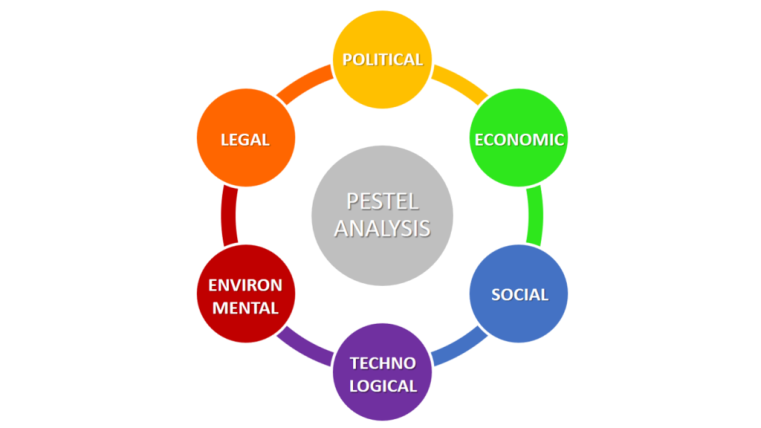PESTEL Analysis
A PESTEL analysis is a framework or tool used to analyse and monitor the macro-environmental (external marketing environment) factors that have an impact on an organisation. The result of which is used to identify threats and weaknesses which is used in a SWOT analysis.
 PESTEL stands for:
PESTEL stands for:
- P – Political
- E – Economic
- S – Social
- T – Technological
- E – Environmental
- L – Legal
External environmental factors (PESTEL factors) Political Factors
These are all about how and to what degree a government intervenes in the economy. This can include – government policy, political stability or instability in overseas markets, foreign trade policy, tax policy, labour law, environmental law, trade restrictions and so on.
It is clear from the list above that political factors often have an impact on organisations and how they do business. Organisations need to be able to respond to the current and anticipated future legislation, and adjust their marketing policy accordingly.
Economic Factors
Economic factors have a significant impact on how an organisation does business and also how profitable they are. Factors include – economic growth, interest rates, exchange rates, inflation, disposable income of consumers and businesses and so on.
These factors can be further broken down into macro-economic and micro-economic factors. Macro-economic factors deal with the management of demand in any given economy. Governments use interest rate control, taxation policy and government expenditure as their main mechanisms they use for this. Micro-economic factors are all about the way people spend their incomes. This has a large impact on B2C organisations in particular.
Social Factors
Also known as socio-cultural factors, are the areas that involve the shared belief and attitudes of the population. These factors include – population growth, age distribution, health consciousness, and career attitudes and so on. These factors are of particular interest as they have a direct effect on how marketers understand customers and what drives them.
Technological Factors
We all know how fast the technological landscape changes and how this impacts the way we market our products. Technological factors affect marketing and the management thereof in three distinct ways:
- New ways of producing goods and services
- New ways of distributing goods and services
- New ways of communicating with target markets
Environmental Factors
Legal factors include – health and safety, equal opportunities, advertising standards, consumer rights and laws, product labelling and product safety. It is clear that companies need to know what is and what is not legal in order to trade successfully. If an organisation trades globally this becomes a very tricky area to get right as each country has its own set of rules and regulations.
After you have completed a PESTEL analysis you should be able to use this to help you identify the strengths and weaknesses for a SWOT analysis.
Legal Factors
These factors have only really come to the forefront in the last fifteen years or so. They have become important due to the increasing scarcity of raw materials, pollution targets, doing business as an ethical and sustainable company, carbon footprint targets set by governments (this is a good example were one factor could be classes as political and environmental at the same time). These are just some of the issues marketers are facing within this factor. More and more consumers are demanding that the products they buy are sourced ethically, and if possible from a sustainable source.
